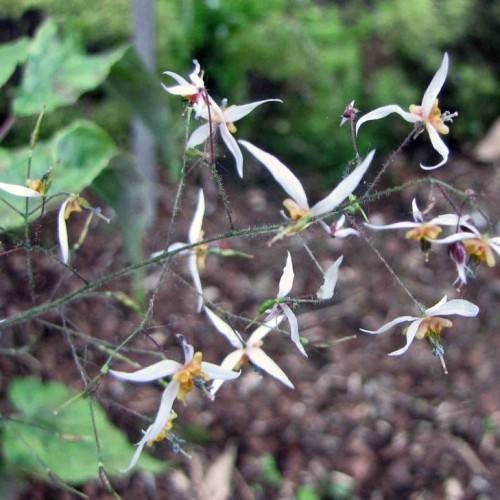
bishop's hat
Epimedium pubescens
Cycle:
Herbaceous Perennial
Watering:
Minimum
Hardiness Zone:
5 - 9
Flowers:
Flowers
Sun:
Part shade,full shade
Leaf:
Yes
Growth Rate:
Low
Maintenance:
Low
Drought Tolerant:
Yes
Care Level:
Medium
watering
Bishop's Hat should be watered deeply about every 10 days during the spring and summer months, and less frequently in the winter months. When you water your Bishop's Hat, you should saturate the soil, until it is fully damp throughout. Allow the top inch or 2 of soil to dry out between waterings. If you are fertilizing the plant, it is best to wait to do so until after you have watered. Overwatering can easily lead to root rot, so it is important to monitor your Bishop's Hat's soil moisture levels regularly.
sunlight
Bishop's hat (Epimedium pubescens) prefers partial shade and an indirect light during late morning and early afternoon. This plant prefers bright, indirect light all year long and will also do well in part shade conditions. When grown outdoors, it will need roughly 4 to 6 hours of sun each day. If the plant doesn't receive enough light, its growth will be inhibited and it will not flower. Bishop's hat can also be grown indoors, in which case it should be positioned in a window that receives ample natural light. A south or west-facing window is ideal.
pruning
Pruning of Bishop’s Hat (Epimedium pubescens) is essential in order to maintain the compact, attractive appearance of the plant. Pruning should take place in late winter or early spring, just before new growth appears. Medium pruning can be used to remove any dead, damaged, or diseased branches and stems, as well as to shape the overall size and shape of the plant. Heavy pruning should not be done, as Bishop’s Hat is a slow-growing plant. When pruning, it is best to prune selectively and less is more. When finished, lightly prune the tips to encourage bushiness.
